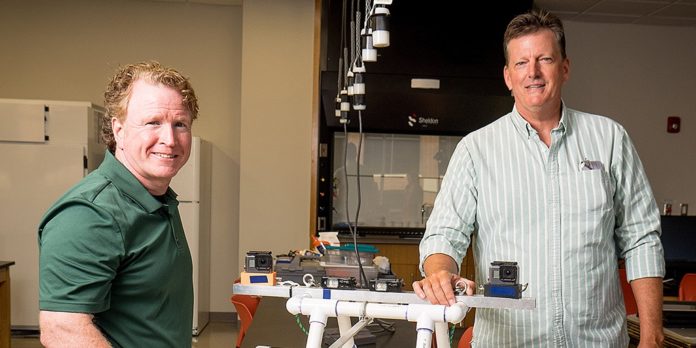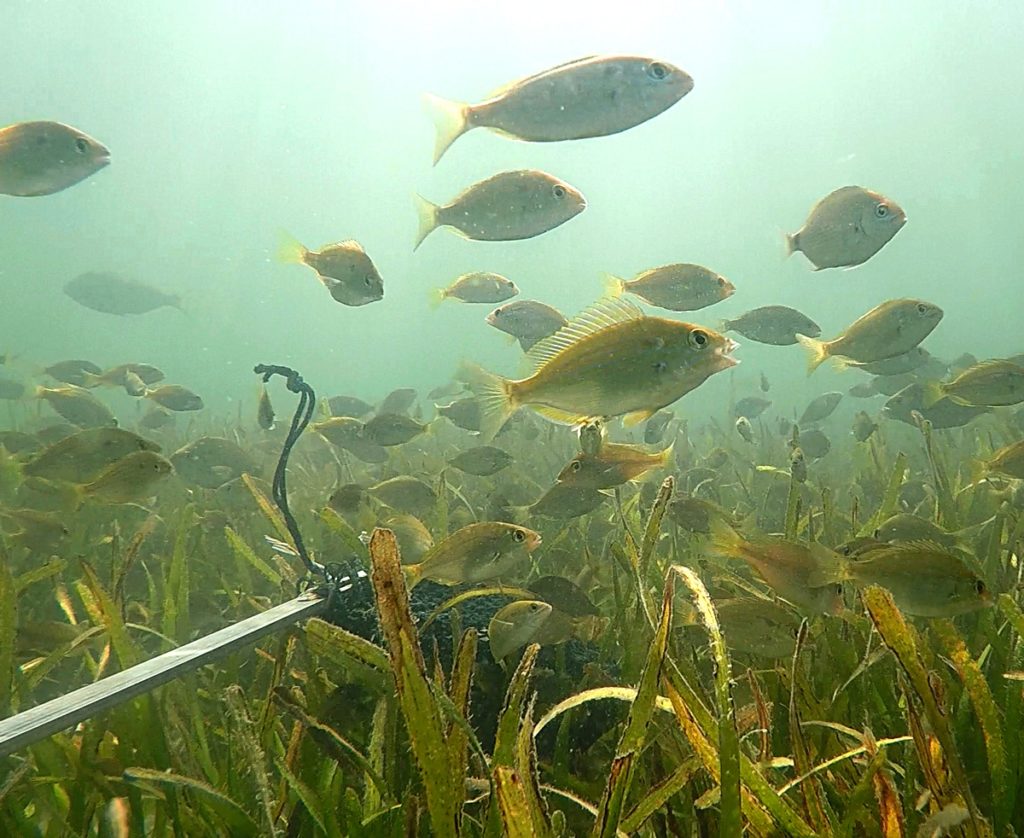
Two Mercer University faculty members hope to provide a better picture of underwater life off the Florida coast with new technology they’ve developed.
Biology professor Dr. Mike Moore and environmental engineering professor Dr. Phil McCreanor have designed a Baited Remote Underwater Video – or BRUV – system that can monitor the effect of artificial reefs on fish communities.
Artificial reefs are man-made structures sunk into the ocean for the purpose of creating homes for marine life, attracting fish and improving ecosystems. The health of those reef systems has a huge impact on the fishing industry along the Florida coast.
The professors have partnered with the Mexico Beach Artificial Reef Association (MBARA) on the project, which began almost a year ago. This is one of the University’s first efforts involving marine research, and it has the potential to involve many students from undergraduate to graduate level, Dr. Moore said.
“The essential question is what types of artificial reefs are promoting the healthiest ecological systems,” he said. “Other people want to know what type of artificial reefs promote the best fisheries.”
They have built three BRUV devices, which cost about $750 each with all the electronic components. Each system has a temperature monitor, three light sources, two GoPro cameras, and a bait bar that holds food to attract fish.
With buoys attached, the devices are dropped into the ocean near artificial reef sites and retrieved 45 minutes later. The data collected can be used to identify fish, quantify their behaviors and, ultimately, figure out which reef systems work best. The systems are a more accurate, cost-effective, time-effective and safe way to sample fish communities than using divers.
“We can get some pretty efficient scientific data,” Dr. Moore said. “We can analyze how temperature, oxygen, depth and structure influence these fish communities.”

The professors finished constructing the BRUV systems at the end of the spring semester. Dr. Moore spent the rest of May calibrating the systems, and he got them into the water to begin data collection this summer. MBARA has 155 artificial reef sites that could be monitored as part of the project. Funding is being provided through the university’s “Research that Reaches Out” Quality Enhancement Plan (QEP).
Dr. Moore hopes to later add an oxygen sensor to the BRUV devices, and Dr. McCreanor wants to create a way to adjust the direction of the system while in the water. The system’s design could be improved in other ways as students offer suggestions. Robotics, mechanical, industrial and environmental engineering groups could get involved in the project, Dr. McCreanor said.
Mercer students could conceivably begin work with the project early in their undergraduate careers and mature as researchers and biologists as they continue that work, Dr. Moore said.
“This is a project that is very approachable by even an undergraduate student,” said Dr. McCreanor, who’s worked for Mercer since 1999. “To be able to get sophomores involved that are going to be here for several years is exciting. Not only will they learn the fundamental research, but they’ll be positioned to lead the research when they’re seniors.”
Dr. Moore already has four students lined up to do video analysis and two students to do publications and presentations in the spring.
“In my 21 years at Mercer, all of my research has ultimately been about involving undergraduates. This is another project where there are a lot of student opportunities,” Dr. Moore said.
“I like the fact that the opportunities are not just for engineering students but for biology students, as well.”
With the exact dimensions of the system set, students will be able to build additional devices. Dr. McCreanor said the design plans can serve as a platform to guide engineering projects. They could eventually be published for use by other schools and agencies as a form of outreach.









